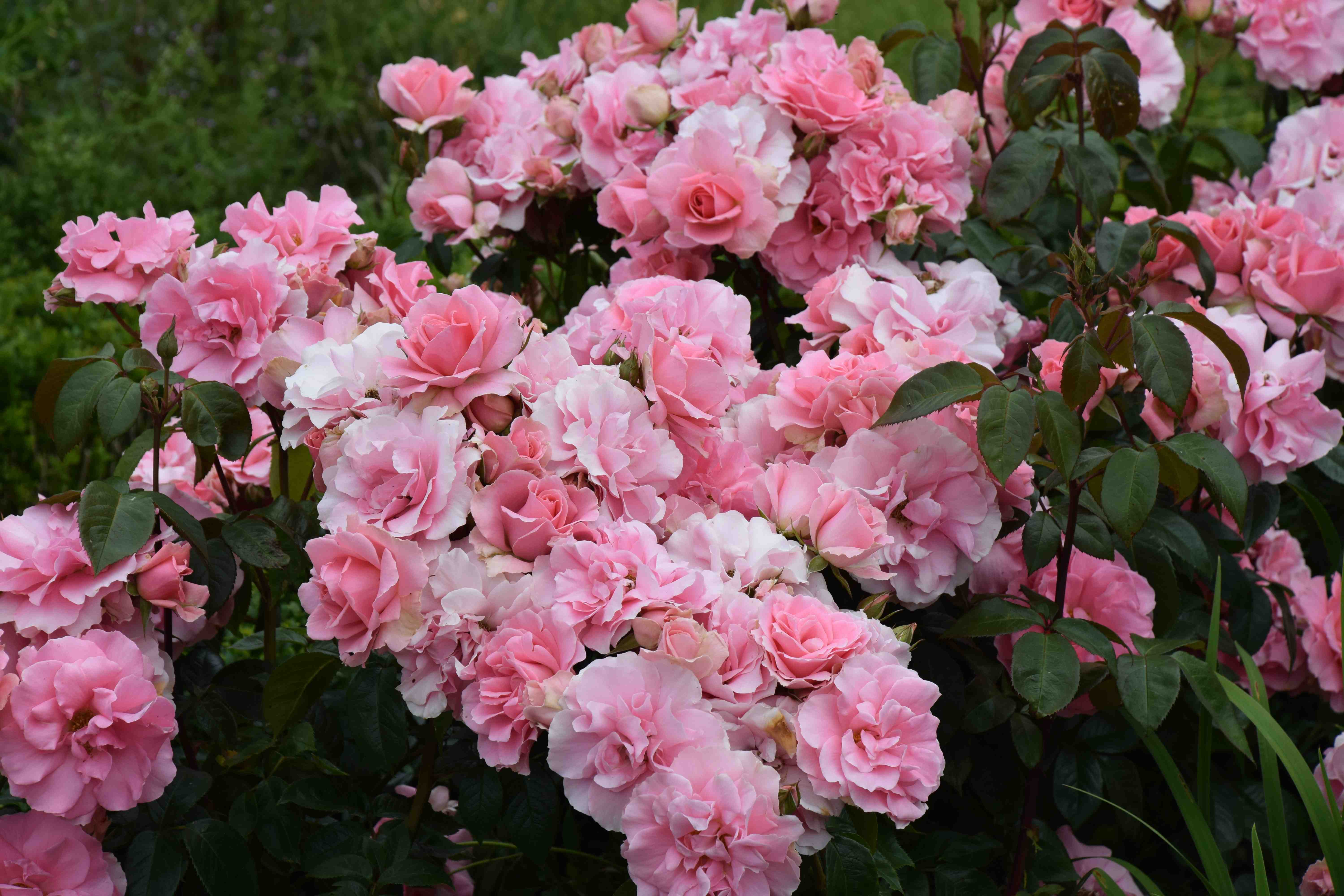
I can’t imagine a garden without roses. They are the UK’s most popular flowering shrub but many people have a love/hate relationship with their roses. We all love their flowers but roses are prone to diseases and covered in prickles. And the pruning is SO complicated.
Well, let’s get a few things sorted. Roses do not have to be prone to disease. Older kinds, such as ‘Peace’ were introduced when the air was full of soot and sulphur which tended to reduce fungal diseases. One of the disadvantages of having clean air is that fungal diseases are more prevalent. And the rose breeders of the time wanted to produce huge, ‘perfect’ blooms and didn’t think about resistance to disease.
Modern roses are evaluated by the breeders for disease from the moment the seedlings emerge and any that are not healthy don’t even get a chance to bloom in the trial fields. Modern roses rarely have the traditional ‘Hybrid Tea Rose’ shape but are much better ‘mixers’ in the border. Most roses do have prickles but there have been thornless roses in the past and they were not that popular. Some are heavily armed but a few prickles are not a real problem (except when spring pruning of course).
So, if you are planting roses please try some of the newer kinds and not the ones you grew up with. Modern roses do not all have strong scent but some of them do. My pet moan is the old rose ‘Blue Moon’. It is (to my taste) a gorgeous lilac colour and has large, sweetly scented flowers. But it is very prone to disease. It is commonly available. But there is now ‘Twice in a Blue Moon’ and this is very similar and is resistant to disease. It is not very thorny either and perfect for cutting. This is what you should buy!
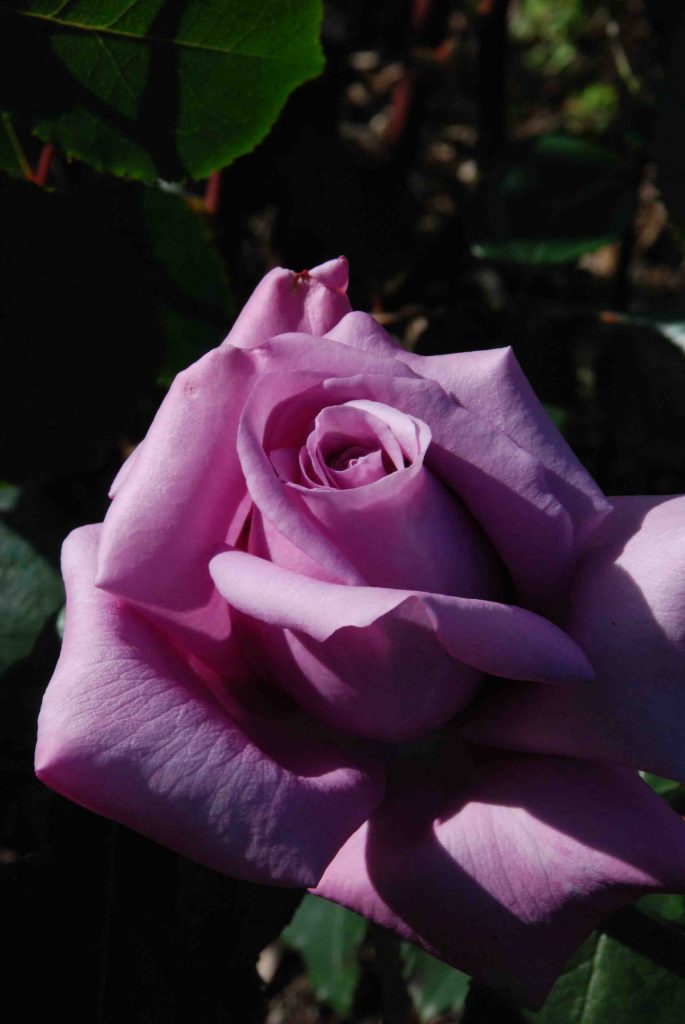
And pruning is not really the problem it seems to be.
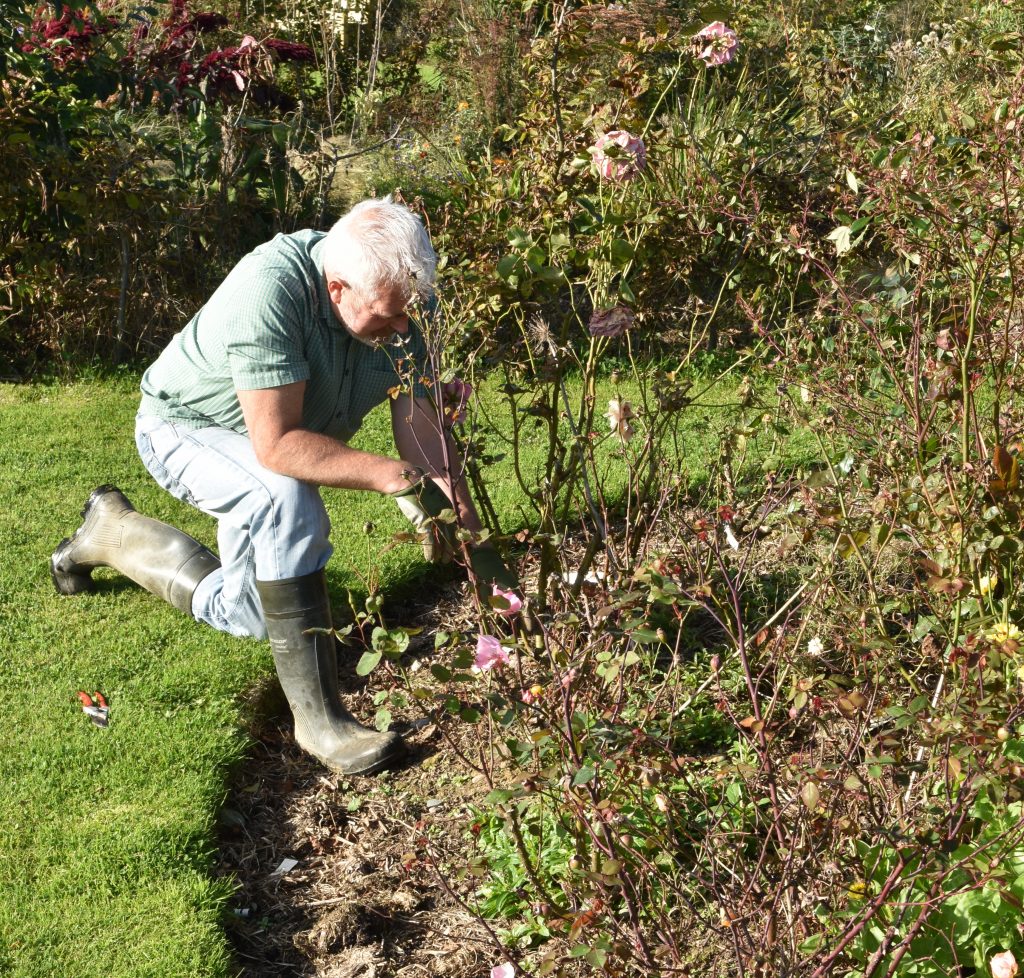
I grow my roses in various places. I have them mixed in with other plants but, like most people, I do have a dedicated rose bed. In this I grow a strange collection of favourite roses. What they all have in common is that they are reblooming roses, mostly Tea roses or Hybrid Tea.
At this stage I need to talk about different kinds of roses – briefly!
‘Old Fashioned’ roses, bred from European wild roses, flower once, in July. These, and once-flowering rambler roses (not climbing roses) should be lightly pruned after flowering and NOT heavily pruned in spring.
Now we have that out of the way we can talk about the most popular roses which bloom on the new growth produced in summer and which are pruned in spring. These include climbing roses, Large-flowered (Hybrid Tea), Cluster-flowered (Floribunda) and all the modern, intermediate kinds.
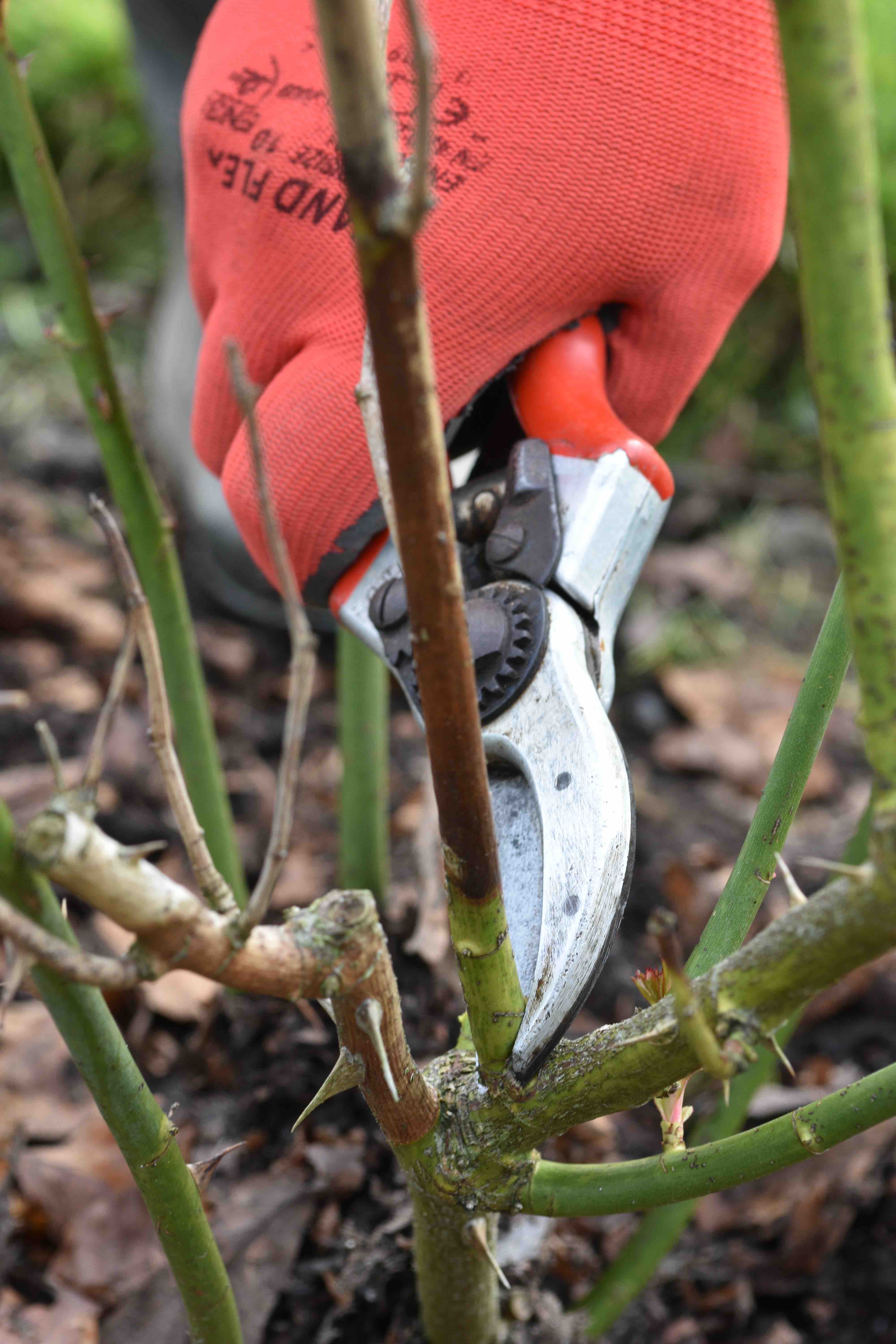
Why do we prune?
So why do we prune at all? Well the main reason is to promote vigour. Yes, we prune to encourage growth. If we did not prune the rose it would get very twiggy with thin stems and poor flowers. The mass of growth is prone to disease too. And as stems get old and die the dead growth can spread into healthy areas.
Where to start
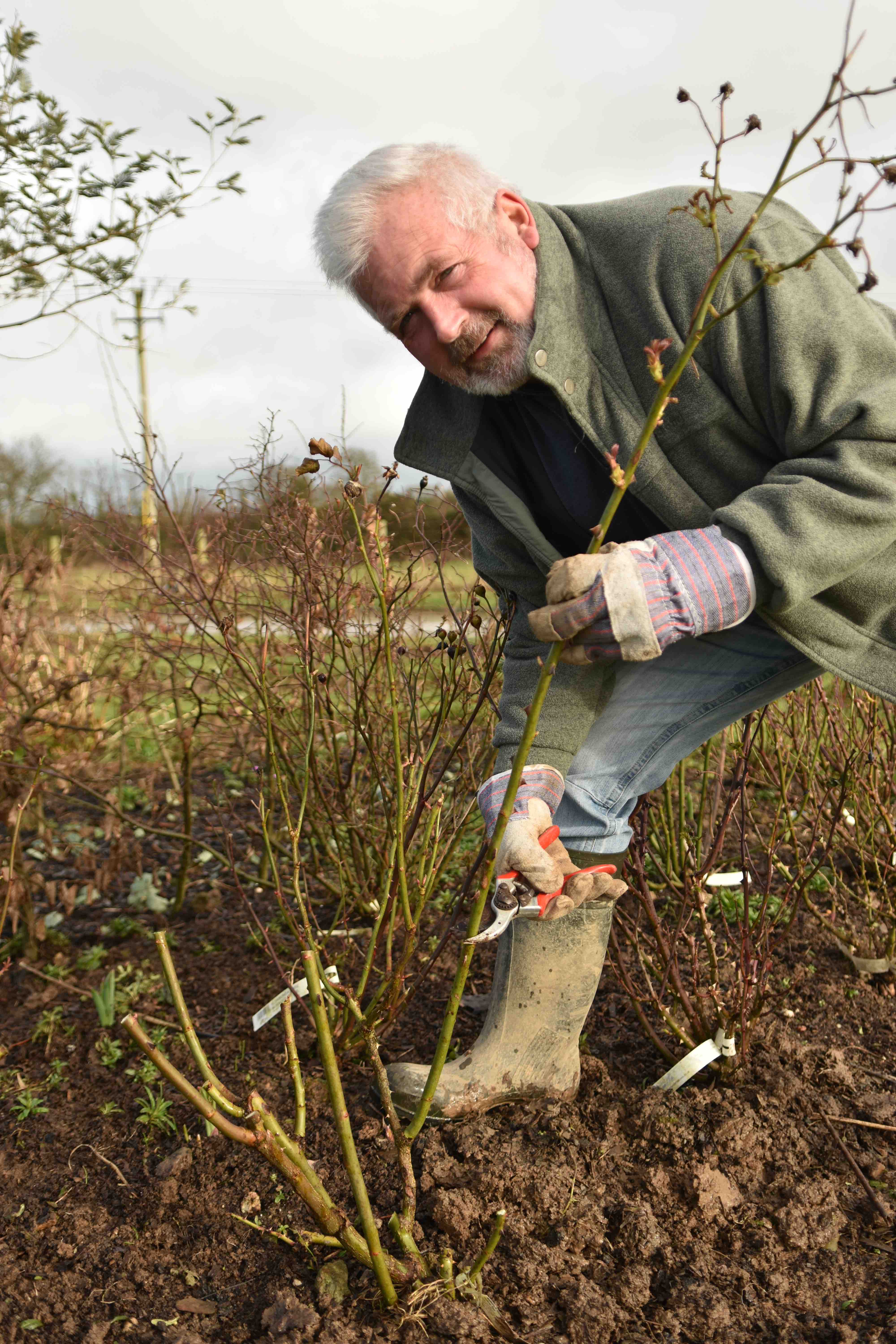
Start by pruning out thin and dead stems. The aim is to leave only healthy, thick stems and to prune to buds that face the outer side of the bush to keep the centre of the bush open. You can start with light pruning and then cut back hard later.
How hard to prune
It is very unlikely that you will kill a rose by pruning too hard. If you have a very old bush with a grey, thick trunk you can saw this off and it will sprout. There is no reason why a rose should have a 1m high gnarled base unless you like it that way. If you prune hard you will get very vigorous new shoots. These may flower at the tips but sometimes they are ‘blind’ in which case you can shorten them in summer.
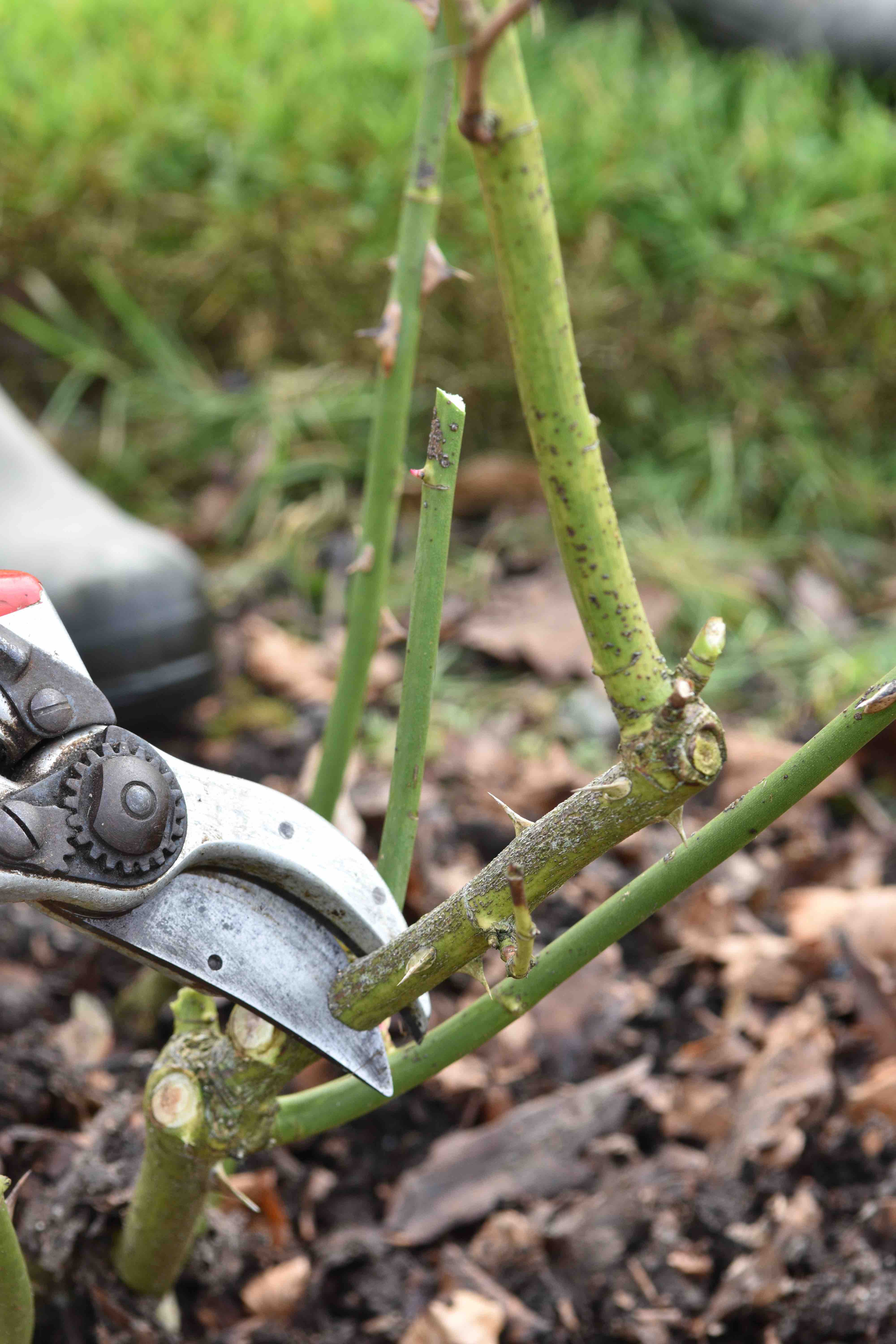
When pruning, cut just above a bud. If you leave a length of stem above the bud it can encourage dieback. And always use secateurs and not scissors or hedge trimmers!
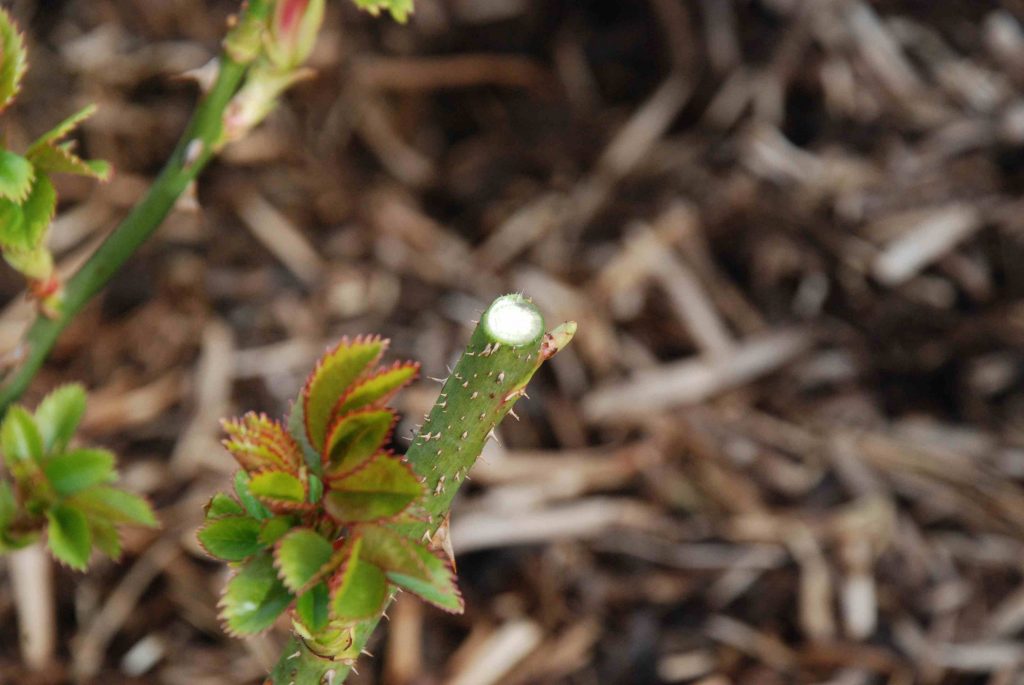
After pruning, mulch the beds with compost or/and apply a good quality rose fertiliser.
Weekly reminders
Cornus (dogwoods) Prune back the stems of colourful cornus to encourage new growth in spring
Deadhead early daffodils as the flowers fade but allow the foliage to mature
Divide and replant snowdrops if they are getting crowded
Plant rhubarb and Jerusalem artichokes for years of crops
Sow tomatoes in a warm greenhouse if you have suitable conditions to grow them on but leave it till late March if you are growing on the windowsill or they will be too big by planting time
It is the last chance to plant lilies, either in pots or in the border